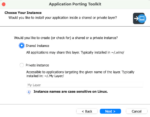With SPTechCon 2013 Boston now in the books, the community looks ahead to the next show, slated for April 22-25 in San Francisco. As the show wrapped this year, it was odd saying goodbye to friends and members of the community knowing that there is a larger gap than usual between now and the next event.
With Microsoft resetting their show calendars for 2014, The SharePoint Conference is now scheduled for March 3-6 in Las Vegas, pushing SPTechCon San Francisco to the end of April. In light of this gap, this month’s piece is focused on some predictions on what changes we will see with SharePoint, and in the community in the coming months.
Line-of-business data
With Microsoft’s Business Critical SharePoint program now in its second year, the SharePoint community is seeing greater insights and offerings around line-of-business data. The goal of this program is to recognize companies whose offerings and products align with Microsoft’s enterprise vision, and to have SharePoint act as the universal standard across the enterprise, using line-of-business data surfaced through SharePoint to make critical business decisions.
The upgrade conundrum
The conversations will continue about the upgrade path and whether, when, how and why companies should move to the next version, whether that version is 2010 or 2013. At SPTechCon last week, I found that attendees were specifically interested in talking about working on their 2010 environment, with little discussion about upgrading. This is in sharp contrast to last year’s events, when people were looking for education on 2013 and the potential upgrade path. Is it possible that more companies are looking at sustaining 2010 environments with no upgrade path?
Social
There is an indubitable move and shift toward a more social environment with SharePoint. Yammer will continue to gain momentum, and organizations will begin to deploy it in place of team sites; yes, I said it: in place of team sites. This has long been a question in the community, and I certainly see that as a probability. For companies not using Yammer today, I recommend a pilot project to review its use and applicability for your organization. You will not be disappointed.
Business process and workflow
Companies will continue to trim the fat off their internal processes by creating automated workflows to take the place of current manual procedures. This isn’t a tough one to predict. A walk through the trade show floor last week showed a number of companies that have now built workflow add-ons and components to assist with the reduction of manual work.
Community involvement
It is widely known that SharePoint enjoys an extremely vocal and dedicated community both in its online and physical presence. I expect to see a standard level of effort toward SharePoint Saturday events, as these have always been grassroots mini-organizations that perform a great service for the community. They also serve as a starting point for many new speakers; I encourage anyone interested in getting into speaking to attend your local SharePoint Saturday and get involved.
Data visualization
The importance of data—that is, knowing what your company knows and not having the same data elements strewn randomly across your intranet—cannot be stressed enough. At Concatenate, we call this “single-source data concept,” defined as inputting information once and having it surface into all required areas of SharePoint. I expect to see more companies interested in maintaining this type of light-data environment where dashboards and charts are created and reviewed with ease, rather than having to search and compile data for simple reporting.
Building for BYOD
Another area to watch is how organizations scale to accommodate for devices. In Joel Oleson’s keynote last week, he showed how websites (if built correctly) can scale their pages from laptop to device size with ease. If you missed the talk, try resizing your browser with your mouse to approximately 1/3 of its current size. If this returned a horizontal scroll bar at the bottom of the page, your site is not optimized for smaller devices. The site should give you a longer vertical page with a navigation bar on the top right that is phone friendly. As more companies rely on off-site employees and having data in the palm of their hands, expect to see growth in the demand for pages that a device can easily view.
Eric Riz is the Executive Vice President of Concatenate, creator of the RealTime suite of products. You can reach Eric by e-mail at ericr@concatenateinc.com, or on Twitter at @rizinsights. Read his other SharePoint thoughts on his blog at www.ericriz.com.





